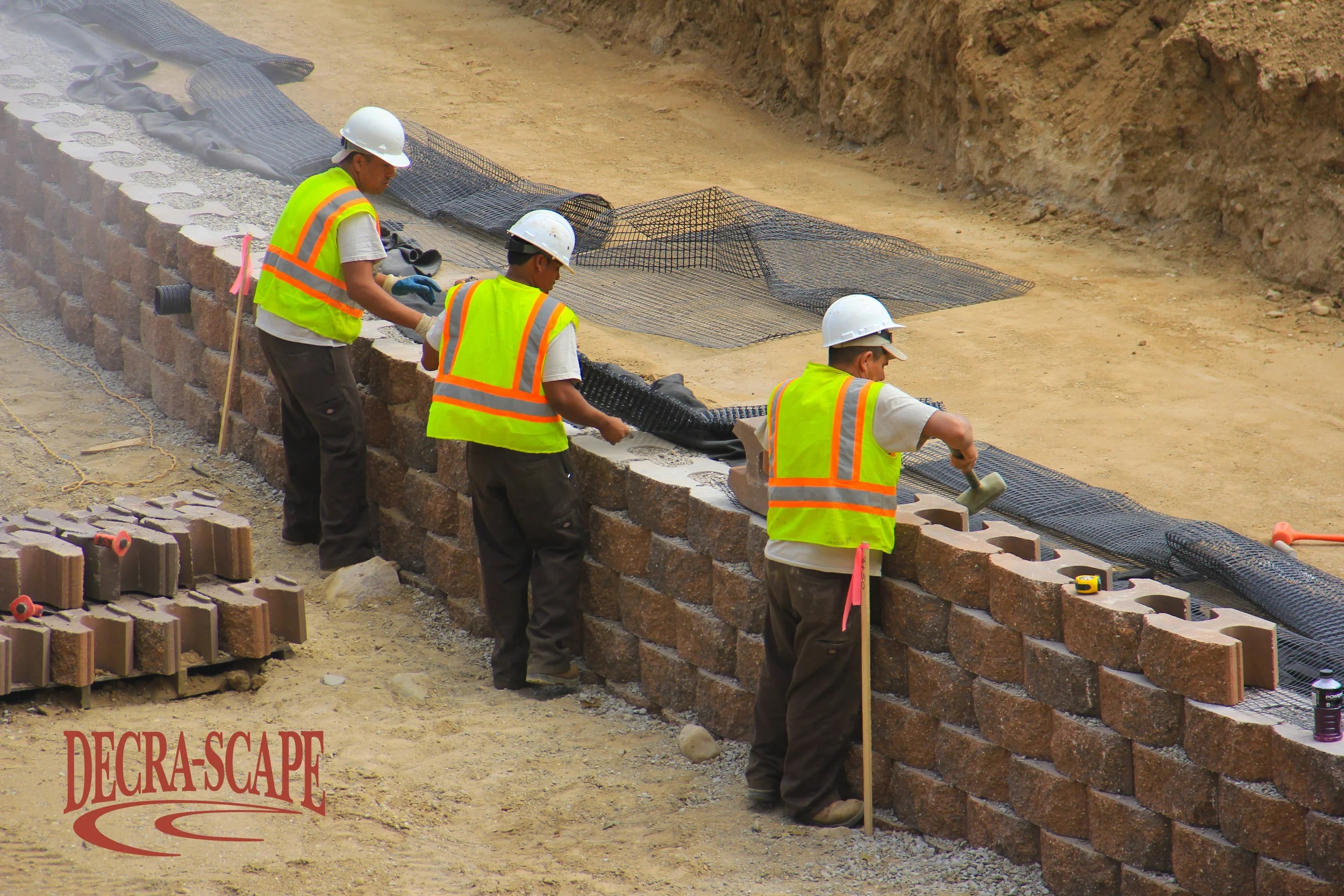Whether retaining walls are used to make sloping terrain more compliant for landscaping or to hold back soil for flower beds, their construction has traditionally been quite an involved process. Thankfully, modern segmental retaining walls offer a cost-effective, durable, and simpler alternative to the more classic version of retaining walls. Such walls can be used to ensure that your commercial landscape design projects in Sterling Heights, MI, will be fully safe and functional.
What Is a Segmental Retaining Wall?
Retaining Wall Sterling Heights MI - Commercial Landscape Design
Segmental retaining walls are modular walls made of concrete blocks that can interlock together. Their most common application is to hold back soil on sloping terrain. The individual blocks can be dry stacked without the need for mortar to hold them in place. Instead, the interlocking mechanisms and the friction between the blocks is sufficient to hold the blocks securely where they need to be. Segmental retaining walls can be constructed in a variety of sizes up to 20 feet and even higher in commercial applications with proper soil reinforcement.
Related: 4 Masonry Maintenance Tips for Increasing the Longevity of Your Rochester Hills, MI, Hardscape
The Advantages of a Segmental Retaining Wall
Segmental retaining walls are known for having shorter installation times than more traditional retaining walls, and they’re considered to be easier to put together. The specialized expertise of a stone mason is not needed while the beauty and functionality that property owners come to expect from their investment in a well-constructed retaining wall will still be attained. One reason for the ease in construction is the lacking need of mortar to bind the blocks together. The other is these walls’ flexibility allows for the footing of the retaining wall to be placed above the frost line. They don’t even need a solid concrete base; a well-compacted, gravel-filled leveling pad is sufficient for many applications. The manufactured concrete blocks coupled with the easier installation process can bring down the overall cost of construction significantly.
Design and Construction
While the construction process is highly simplified, designing and incorporating a segmented retaining wall into your landscape design still requires a lot of expertise. The height of the wall and the strength and thickness of the blocks have to be carefully calculated to suit the volume of soil being retained. In some cases, the wall has to be installed with a more stable backfill soil or gravel and further reinforced by geogrid layers to help retain the soil.
Related: Why Interlocking Pavers Are the Perfect Paving Solution for Freeze/Thaw Climates
Drainage is also an important aspect of any retaining wall design, and segmented retaining walls are no different. Water build-up in the backfill and retained soil can cause hydrostatic pressure to accumulate and potentially stress the retaining wall beyond its limits. Weep holes are a go-to solution for accounting for this issue. These small gaps left in the wall allow the water immediately behind the wall to be drained out. Drainage lines can be used to provide additional drainage with perforated pipes that extend back into the backfill and guide water to the drainage holes.



